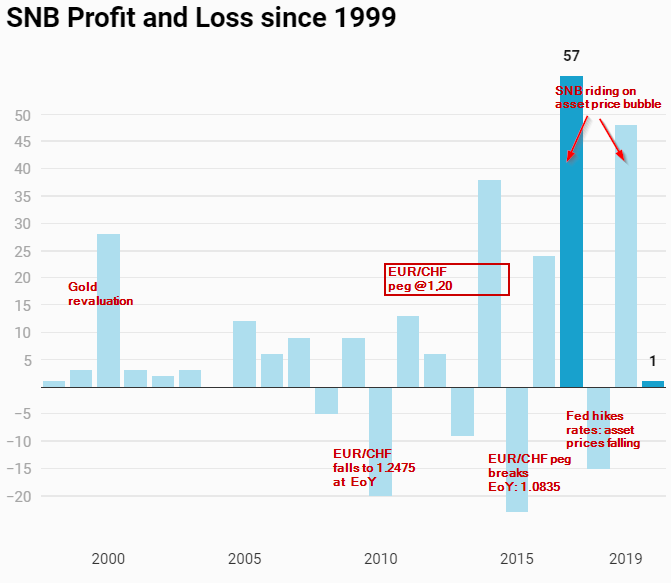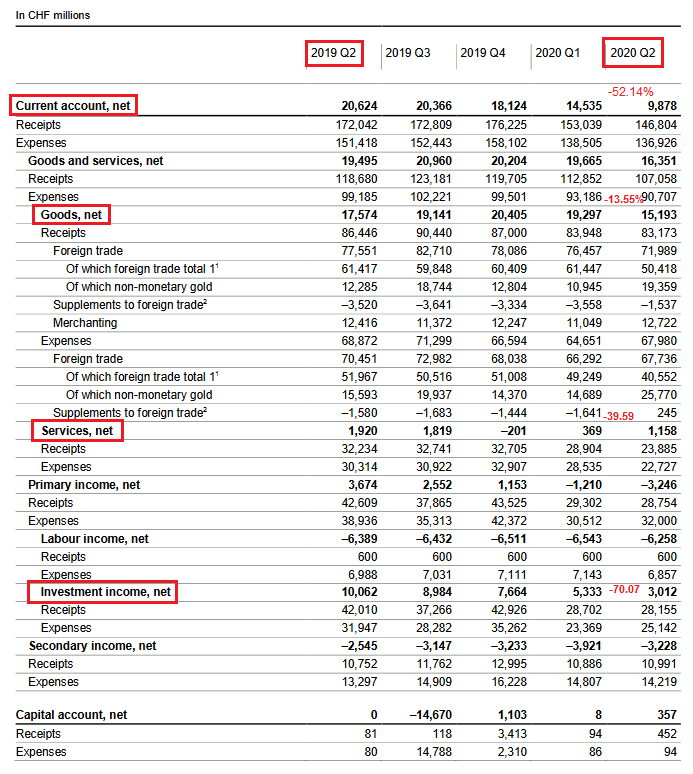Seven central banks and the BIS release a report assessing the feasibility of publicly available CBDCs in helping central banks deliver their public policy objectives. Report outlines foundational principles and core features of a CBDC, but does not give an opinion on whether to issue. Central banks to continue investigating CBDC feasibility without committing to issuance. A group of seven central banks together with the Bank for International Settlements (BIS) today published a report identifying the foundational principles necessary for any publicly available CBDCs to help central banks meet their public policy objectives. The report, Central bank digital currencies: foundational principles and core features, was compiled by the Bank of Canada, the Bank of
Topics:
Swiss National Bank considers the following as important: 1.) SNB Press Releases, 1) SNB and CHF, Featured, newsletter
This could be interesting, too:
Nachrichten Ticker - www.finanzen.ch writes Die Performance der Kryptowährungen in KW 9: Das hat sich bei Bitcoin, Ether & Co. getan
Nachrichten Ticker - www.finanzen.ch writes Wer verbirgt sich hinter der Ethereum-Technologie?
Martin Hartmann writes Eine Analyse nach den Lehren von Milton Friedman
Marc Chandler writes March 2025 Monthly
- Seven central banks and the BIS release a report assessing the feasibility of publicly available CBDCs in helping central banks deliver their public policy objectives.
- Report outlines foundational principles and core features of a CBDC, but does not give an opinion on whether to issue.
- Central banks to continue investigating CBDC feasibility without committing to issuance.
 A group of seven central banks together with the Bank for International Settlements (BIS) today published a report identifying the foundational principles necessary for any publicly available CBDCs to help central banks meet their public policy objectives.
A group of seven central banks together with the Bank for International Settlements (BIS) today published a report identifying the foundational principles necessary for any publicly available CBDCs to help central banks meet their public policy objectives.
The report, Central bank digital currencies: foundational principles and core features, was compiled by the Bank of Canada, the Bank of England, the Bank of Japan, the European Central Bank, the Federal Reserve, Sveriges Riksbank, the Swiss National Bank and the BIS, and highlights three key principles for a CBDC:
- Coexistence with cash and other types of money in a flexible and innovative payment system.
- Any introduction should support wider policy objectives and do no harm to monetary and financial stability.
- Features should promote innovation and efficiency.
The group of central banks will continue to work together on CBDCs, without prejudging any decision on whether or not to introduce CBDCs in their jurisdictions.
“This report is a real step forward for this group of central banks in agreeing the common principles and identifying the key features we believe would be needed for a workable CBDC system. As well as helping central banks to meet their public policy objectives, the report provides a useful framework for how central banks provide money and support payment systems in an ever-evolving digital world. This group of central banks has built a strong international consensus which will help light the way as we each explore the case and design for CBDCs in our own jurisdictions,” said working group co-chair Sir Jon Cunliffe, Deputy Governor of the Bank of England and Chair of the Committee on Payments and Market Infrastructures.
Based on these principles, the group has identified the core features of any future CBDC system, which must be:
- Resilient and secure to maintain operational integrity.
- Convenient and available at very low or no cost to end users.
- Underpinned by appropriate standards and a clear legal framework.
- Have an appropriate role for the private sector, as well as promoting competition and innovation.
“A design that delivers these features can promote more resilient, efficient, inclusive and innovative payments. Although there will be no one ‘one size fits all’ CBDC due to national priorities and circumstances, our report provides a springboard for further development of workable CBDCs,” said working group co-chair Benoît Cœuré, Head of the BIS Innovation Hub.
Further development of CBDCs requires a commitment to practical policy analysis and applied technical experimentation. While this has already started, the speed of innovation in payments and money-related technologies requires the prioritisation of collaborative experimentation.
“While technology is changing the way we pay, central banks have a duty to safeguard people’s trust in our money. Central banks must complement their domestic efforts with close cooperation to guide the exploration of central bank digital currencies to identify reliable principles and encourage innovation. The present report is a convincing proof of this international cooperation,” said Christine Lagarde, President of the European Central Bank, who chairs the group of central bank governors responsible for the report.
Future activities will include exploring other open questions around CBDCs and the challenges of cross-border payments, as well as continuing outreach domestically and with other central banks to foster informed dialogue on key issues. Work by the BIS Innovation Hub, which serves the broader central banking community, will contribute to this objective.
Thomas J. Jordan, Chairman of the Governing Board of the SNB, said: “We are at present seeing rapid developments in the field of digital money. Central banks need to establish a well-founded position as to whether and in what form token-based central bank digital currencies could be used in the future. The SNB is currently exploring in particular the use of digital central bank money by financial institutions, both in a domestic and cross-border context. To this end, the SNB, together with the BIS Innovation Hub, is conducting a project to examine the integration of digital central bank money into a financial market infrastructure based on distributed ledger technology.”
The report is available on the website of the BIS: www.bis.org.
Tags: Featured,newsletter








